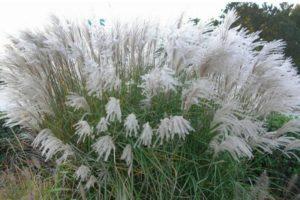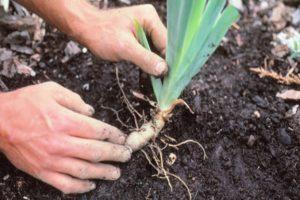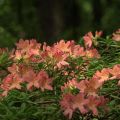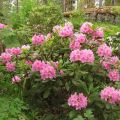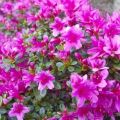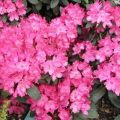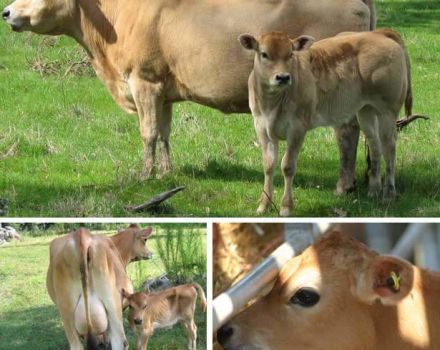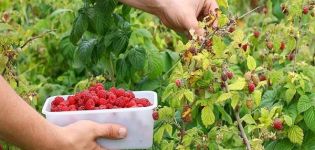Planting and caring for rhododendrons in the Urals, preparing for winter
Rhododendrons are distinguished by their unpretentiousness and beautiful appearance. Breeders have developed many varieties of this plant. There are also frost-resistant rhododendrons, for growing in the Urals, with the care and planting of which there are no difficulties. The only requirement that the plant makes is that the soil must be acidic. In slightly acidic or neutral soil, the survival rate of seedlings decreases.
Description, characteristics and features
Rhododendron is a lush-growing shrub with a shallow root system. Most plant varieties have erect stems. But in which shrubs the branches are bent to the soil.
The leaves of rhododendrons are of a wide variety:
- sedentary;
- with petioles;
- all-edge;
- next;
- ovoid;
- pubescent and others.
18 species of rhododendrons grow in Russia. In the Urals, only compact shrubs are capable of growing.
Allocate home and garden rhododendron (azalea). The flowers of the plant are bisexual, with a large corolla, the shade of which varies from yellow to purple.
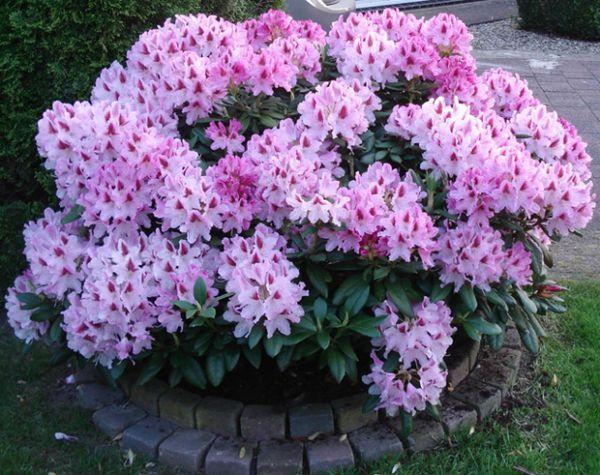
Frost-resistant varieties
Due to the short summers and winters, during which the air temperature often drops below -30 degrees, exceptionally frost-resistant crops are able to grow in the Urals. Among rhododendrons, there are 10 species that meet this requirement.
Peares american beauty
It is considered one of the best varieties of rhododendrons that can withstand prolonged frosts. The shrub height reaches 1.5 meters. The plant begins to bloom in May and ends in June. The bush grows in acidic soil. The color of the flowers ranges from pink to golden red.
Calsap
The height of the shrub is 1.4 meters, the width of the crown is 1.3 meters. On the branches of Calsap, white flowers are formed with a faint pink tint. The shrub grows in acidic and loose soils.

Daursky
The maximum height of the Daursky rhododendron, which prefers to grow in coniferous forests or on rocks, is 3 meters. Leaves up to two centimeters long change from green to red during the season. The first flowers of a pinkish-purple hue appear in mid-spring. The leaves of this shrub do not fall off in winter.
Ledebour
Ledebura (maralnik) is a two-meter shrub with a compactly located crown.The plant retains leaves during the winter, which fall off in the spring, shortly before the flowers appear. The culture tolerates a drop in temperature to -32 degrees.
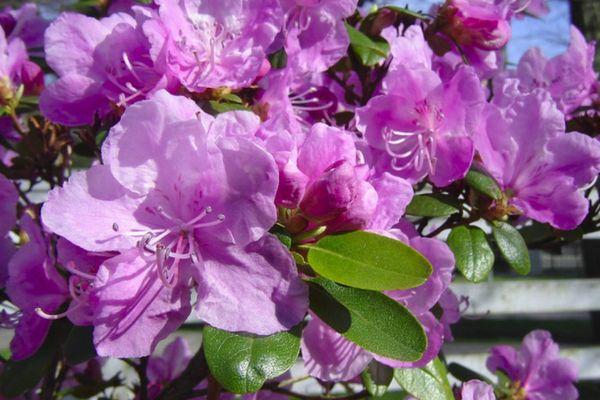
Schlippenbach
The Schlippenbach variety is interesting in that white or pink flowers of a rich shade in the shape of a bell are formed on the shrub. Plant height does not exceed 1.6 meters.
Haaga
The Finnish variety of Haaga rhododendrons with a branchy and spherical crown and large, deep pink flowers that appear in mid-July and fall off in July. Leaves with orange dots do not change color during the season.
Mauritz
A hybrid variety with a dense and well-branching crown, dark green leaves and cherry-red flowers. The plant can withstand temperature drops down to -30 degrees.
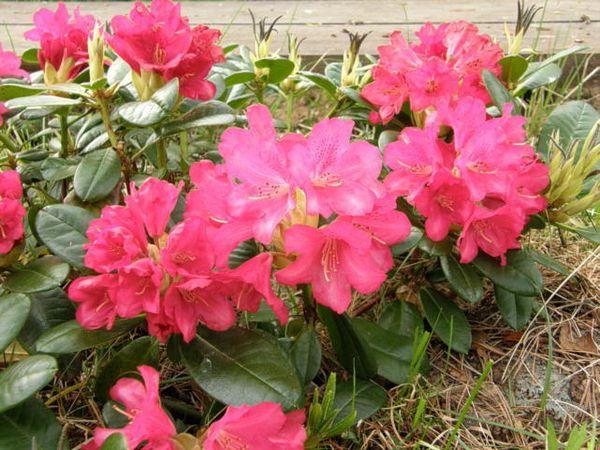
Mikkeli
Another hybrid, characterized by original leaves and light pink flowers that bloom in June. The first strong buds appear on the shrub 2-3 years after planting. The height of the shrub is more than two meters.
Peter tigerstedt
A hybrid cultivar bred in Finland, it has large, funnel-shaped white flowers and an evergreen crown. The length of the branches of the shrub does not exceed two meters.
Landing dates
Due to the fact that frost-resistant rhododendrons, in general, have an open root system, it is recommended to plant a shrub in early spring. In this case, it is necessary to choose zones where the scorching sun does not penetrate. Closed-root varieties can be planted between April and October.
Site selection and soil requirements
Rhododendrons thrive in shaded areas where oblique rays of sunlight penetrate. The optimal area is considered to be on the northern side of the site, located near the house or next to tall trees. Also, a place near water bodies is suitable for disembarkation, since the culture loves moist air.
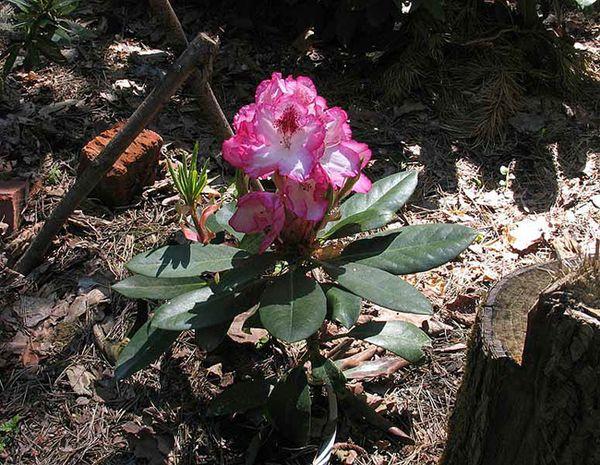
Rhododendrons can grow exclusively in acidic and loose soil. Therefore, before planting in the ground, you will need to add peat with coniferous needles or another substrate that will create optimal conditions for the development of the shrub.
How to choose the right seedling?
In order to avoid problems in the future, it is recommended to purchase seedlings in specialized stores. Before buying, you need to examine the bush, paying attention to the presence of visible damage and insects. A plant with a closed root system should be purchased.
Pit preparation and planting scheme
Before planting, it is recommended to soak the roots of the seedling in water for a day. For a rhododendron, you need to dig a hole 60 centimeters wide and up to 40 centimeters deep. If necessary, the size of the hole can be increased. Then the hole should be filled with peat mixed with pine needles and re-dug up. This mixture is then applied to the root system.
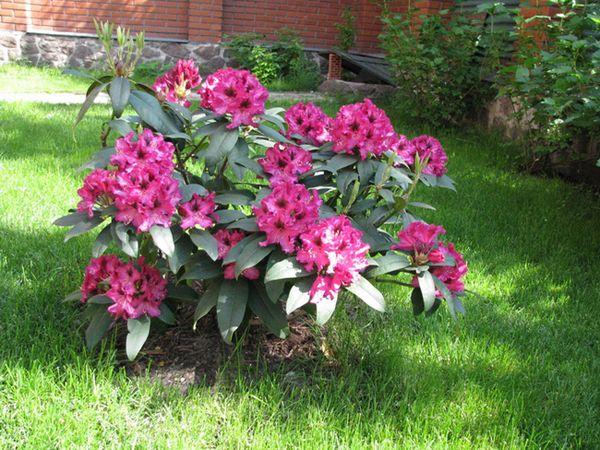
After that, a drainage layer is laid out on the bottom of the pit and a seedling is placed. At the end, the root system is dug in so that the neck remains at ground level. At the end of the manipulations, the seedling must be watered abundantly and mulched. If several rhododendrons are planted on the site at the same time, then a distance of 0.7 meters should be maintained between low-growing species, 2 meters for tall ones.
Care
When growing rhododendrons in the Urals, you will need to follow the rules applicable to plants that are planted in other climatic conditions. The only difference is that shrubs require the installation of a reliable shelter for the winter.
Watering
Rhododendrons require regular and abundant watering. Up to two liters of clean water should be added weekly under an adult shrub. During the growing season, when buds are formed on the branches, it is recommended to increase the frequency of watering. During the warm season, it is also necessary to periodically spray the bushes with a spray bottle.For irrigation, you should use rainwater or settled water with a low calcium content, which, with frequent plant treatment, accumulates near the root system.

Top dressing
It is recommended to feed rhododendrons, in accordance with the following scheme:
- The first feeding is in the spring. At this time, it is necessary to apply complex fertilizers containing nitrogen under the shrub.
- The second top dressing is after the flowers have fallen (the period depends on the variety). At this time, superphosphates or ammonium are introduced under the bush. Specialized fertilizers designed for rhododendrons are also suitable.
- Late summer - early autumn. During this period, the plant is not fed, since fertilization provokes the development of shoots, which can lead to the death of the shrub after the onset of cold weather.
If the seedling is planted in the fall, then the first feeding is recommended in the spring. For 2-3 years it is necessary to remove the topsoil and add a mixture of peat and mullein.
Pruning
Rhododendrons are distinguished by a crown of the correct shape. Therefore, gardeners mainly prune young plants by removing shoots near the central bud. This pinching helps the shrub to form the correct crown. It is necessary to remove branches in cases where the thickness of the shoot exceeds 24 centimeters or signs of the disease are detected. After pinching, the cut site must be treated with oil paint.
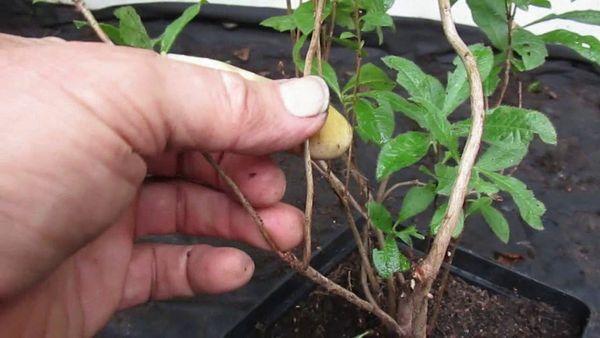
Loosening and mulching
The root system of rhododendrons lies close to the soil surface. Therefore, gardeners avoid loosening the shrub. In the fight against weeds, mulching of the soil, carried out using dry peat, needles or pine bark, helps.
Protection against diseases and pests
When caterpillars or slugs appear on the surface of the leaves, these pests are removed mechanically. In the fight against aphids, scale insects, ticks and weevils, insecticides help.
Common rhododendron diseases include rust (spotting) and rot. For the first treatment, fungicides are used. A bush affected by rot is destroyed. In order to prevent infection, it is recommended to adhere to the watering regime.
Preparing for winter
Preparation for winter begins shortly before the cold weather. It is not recommended to carry out this procedure in advance.
Watering
During the last watering, it is necessary to moisten the soil abundantly, without applying top dressing.
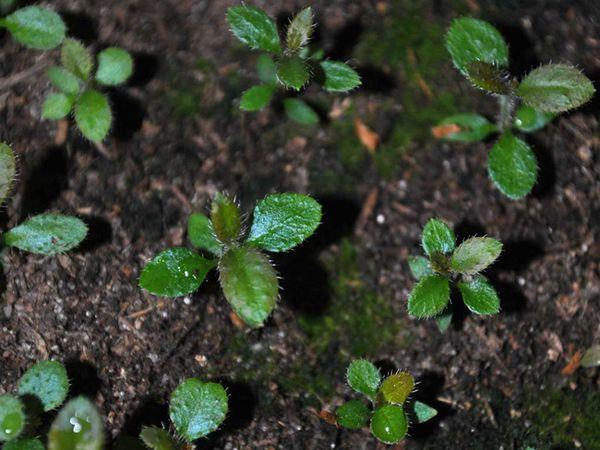
Mulching
After the last watering, the root zone is mulched with a mixture of peat and spruce branches. Fallen leaves are also used for this.
Shelter preparation
You can cover the shrub from the wind with plastic wrap or straw. Before organizing protection, it is necessary to gather together and attach the branches to the ground. After that, the shoots must be closed with the selected material.
Reproduction
Rhododendrons propagate by seeds, layering and cuttings. Gardeners are more likely to resort to the latter option.
Seeds
This breeding option is considered the most time consuming. To grow a new shrub, you will need to plant the seeds in a pot with a mixture of peat and sand, taken in a 3: 1 ratio. The soil is pre-moistened. Seeds are sown on the surface of the soil mixture and covered with sand. To accelerate the growth of planting material, it is necessary to cover the pot with a film, which should be removed for several minutes daily. You can transplant the plant into open ground after the appearance of three or more leaves.
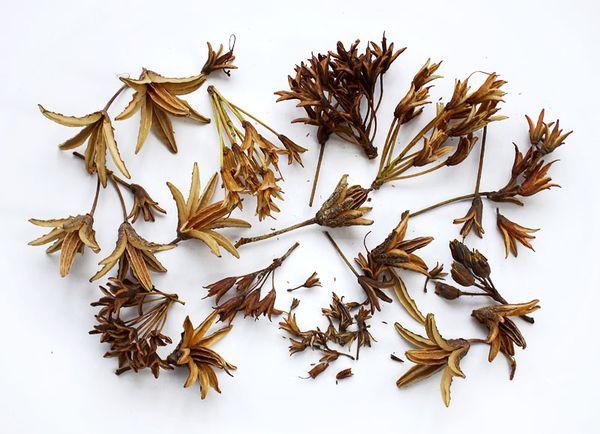
By cuttings
To propagate the bush, you will need to cut a lignified shoot 10 centimeters long from the mother's rhododendron in the spring. Then branches are removed from the bottom of the cutting. The seedling is placed for a day in a solution that accelerates root growth. The next day, the cutting is planted in a pot with a mixture of peat and sand and covered with a jar on top.
Closer to autumn, the bush is transplanted into a wider container. At the same time, the land under the handle is mulched with peat and needles.During the winter, the container with the plant should be kept in a cool and dark room. After the onset of spring, the sprouted bush is transplanted into open ground.
Layers
In the spring, after the snow melts, the lower branches of the bush must be attached to the ground, making a small incision at the point of contact with the ground, fix with a hairpin and cover with peat. After a year, the stalk is separated from the mother bush and transplanted.
Reviews
Antonina, Chelyabinsk
“I have been growing rhododendrons for several years. The first seedlings died because the soil did not meet the requirements for acidity. Now there are four shrubs growing on the site. Plant care is not difficult. The only difficulty is to collect a dense crown to make a shelter. "
Vladimir, Magnitogorsk
“I tried to plant several varieties on the site, but only Mikkeli took root. In the two years that this shrub has been growing, I have never encountered diseases. Slugs have to be removed from time to time. Also, for prophylaxis, I treat the bush with fungicides and apply specialized fertilizing. In the future, they plan to plant another variety. "
